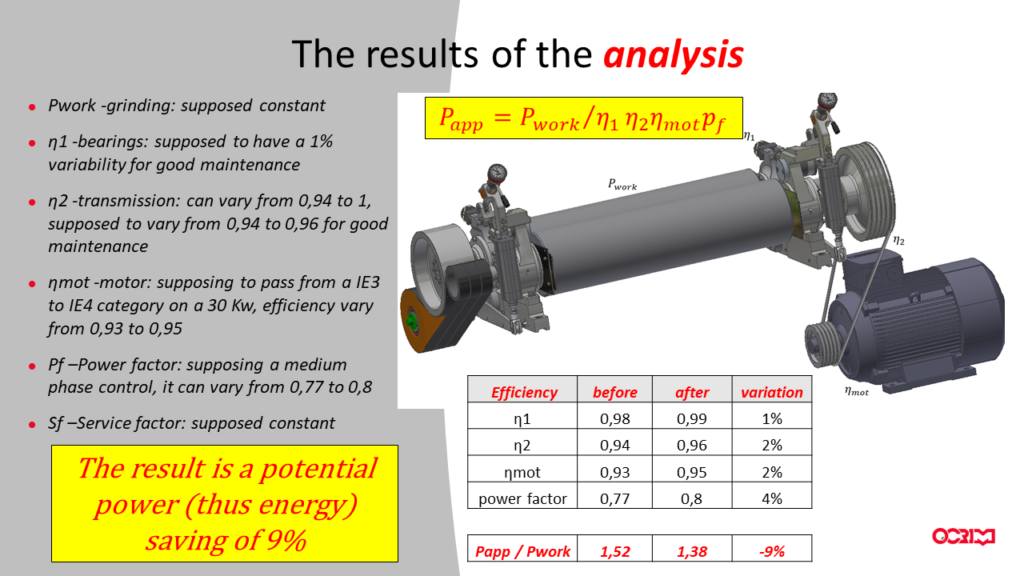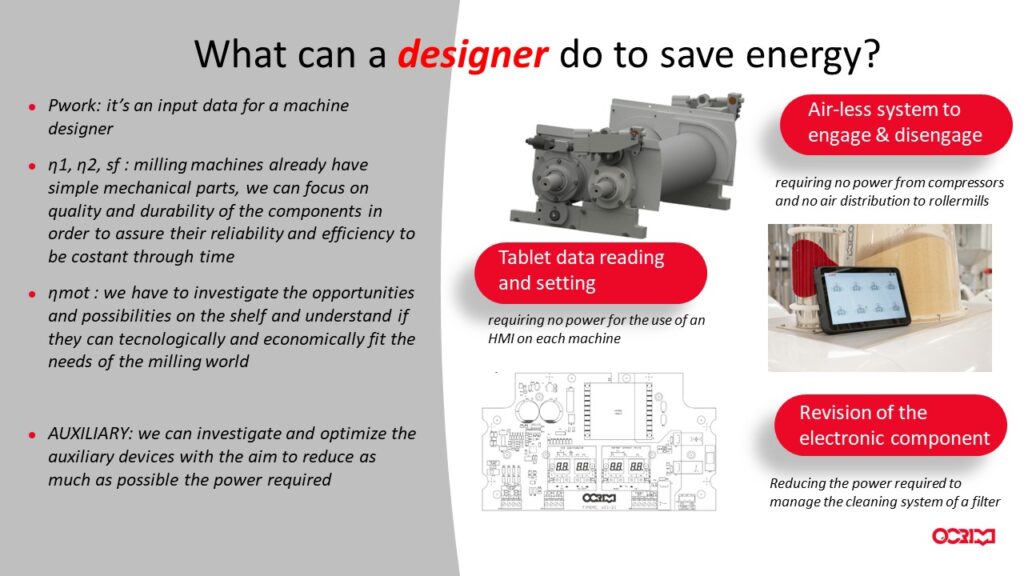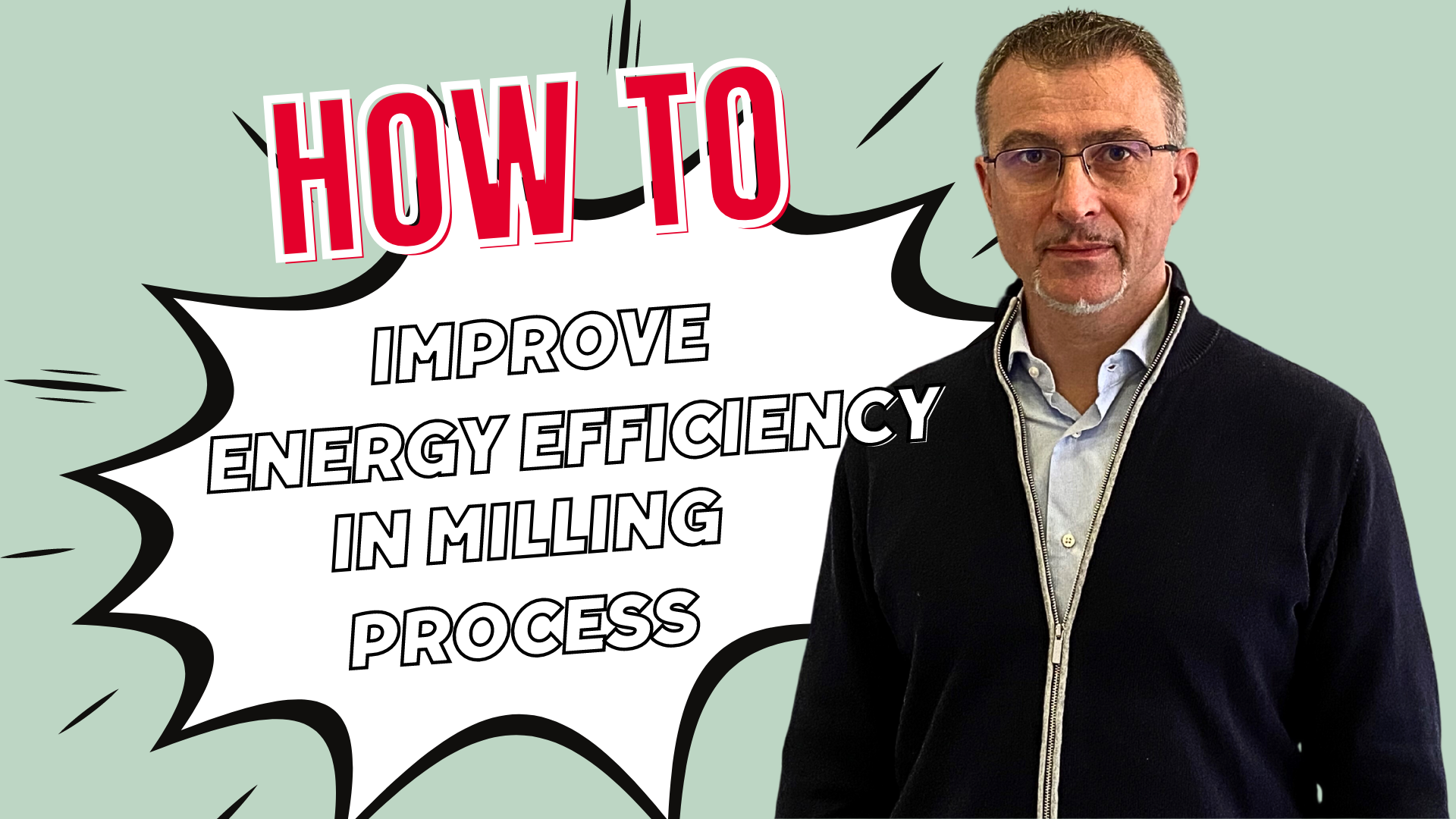The strong turbulence in the energy markets in recent times has worried economists and producers a lot and, despite some positive signals, it remains difficult to make forecasts on the stability of the energy price, always in a precarious balance.
What can Ocrim team do to contain the energy costs of a milling plant? We asked our Simone Pedrini, Mechanical Department Manager who, in this interview, illustrates some interesting strategies and operational choices.
Simone, can you explain to us, in brief and as clear as possible, what are actions for energy savings?

“First of all, we must make a distinction between the management aspect and the construction characteristics of the machine. Let me skip the explanation of technical details and arrive at a more than concrete savings forecast. If we analyze the main variables that come into play in the first case, and by applying a realistic calculation formula, we can state that, with the same milling efficiency, our machine could require up to 9% less power, reducing its energy cost by the same amount.”
What are variables considered?
“By keeping the Power work (grinding) constant, if accurate maintenance of the bearings is carried out, we obtain a 1% savings A 2% is recovered by paying attention to the tension and condition of the belts and transmissions. Another 2% is gained by using IE4 motors or, in any case, motors of a higher efficiency category. But the most significant improvement comes from the attention to the quality of the current we require from the net, which is measured by the power factor (cosφ). To avoid a request of power greater than the real need, it is necessary to provide an effective power factor correction, for the whole plant keeping the power factor within acceptable values.
What impact does the construction aspect have on energy consumption?

“Again here, several factors come into play. It is important that manufacturing and assembly are increasingly accurate, and we focus on the use of components that guarantee reliability over time. About the motors, we are very attentive to market innovations, trying to investigate all implications within the milling plant. The auxiliary devices, which involve decidedly lower installed powers, but which, on a system, can make a long-term contribution should not be underestimated. For example, engage or disengage the rollers without the use of compressed air. Without the solenoid valves, part of the air distribution network is eliminated and therefore less consumption is required from the compressors. Or the management of the machines via tablet which avoids the continuous power supply of an HMI (Human Machine Interface) control panel. Finally, the constant revision aimed at optimizing the electrical and electronic components is essential, which can even halve the power required for its operation”.
We know that our R&D department is always experimenting with new constructive solutions, can you give us a preview in this regard?
“We are conducting a series of evaluations both in the field of transmission and power. For example, concerning reluctance motors required by industry 4.0 for their high efficiency, but also regarding torque motors which several manufacturers are starting to offer. We have conducted an analysis and thoroughly studied their performance, but we believe that they don’t offer convenience in their indiscriminate use, while they represent a partial solution in terms of energy savings However, we must not underestimate the management difficulties faced by those used to work with three-phase motors, because they would be faced with a totally different set of operating parameters and solutions.
We thank our colleague Simone for this contribution and remember our e-mail address ocrimteam@ocrim.com to which you can send requests for clarifications and technical suggestions.
Simone Pedrini: born in 1975, he graduated in mechanics from the Technical Institute of Higher Education of Cremona, he continued his studies at the Politecnico di Milano where he obtained a degree in Aerospace Engineering (structure course). He joined Ocrim in 2005 as a designer, in the machinery office, until 2008. After an external work experience, in 2012 he returned to Ocrim, still in the machinery office and in 2016 he assumed the position of manager. Since 2019 he has also managed the mechanical office that deals with handling systems.



